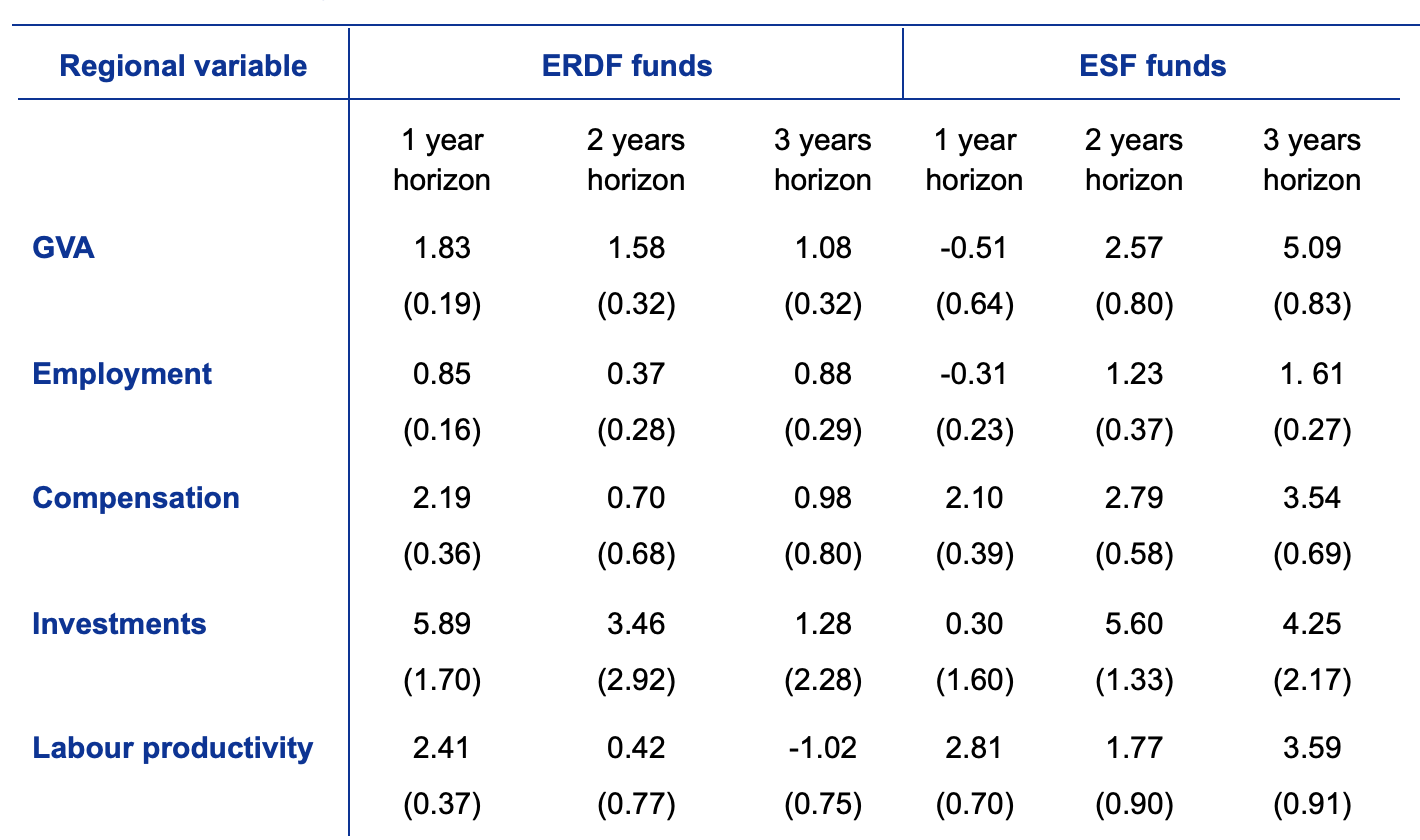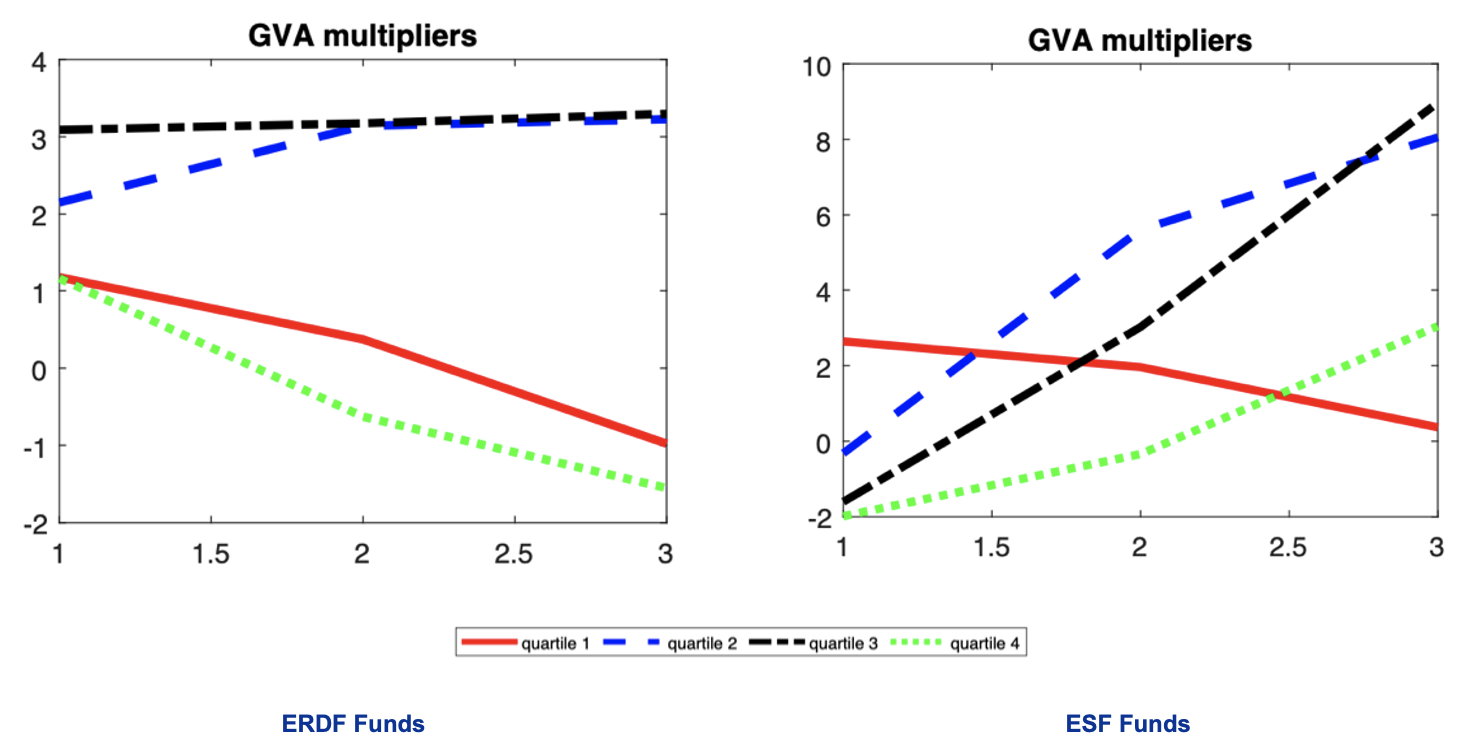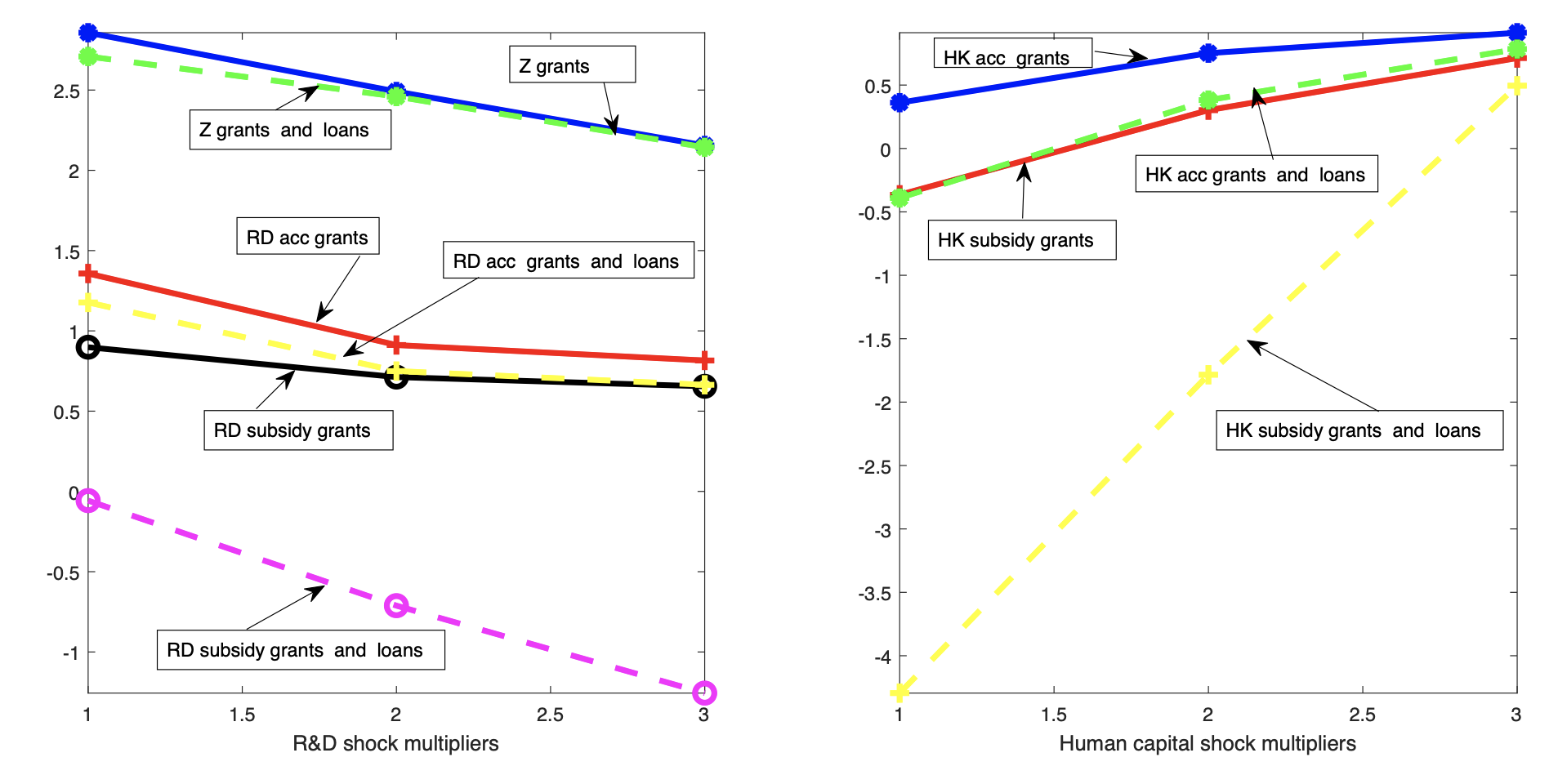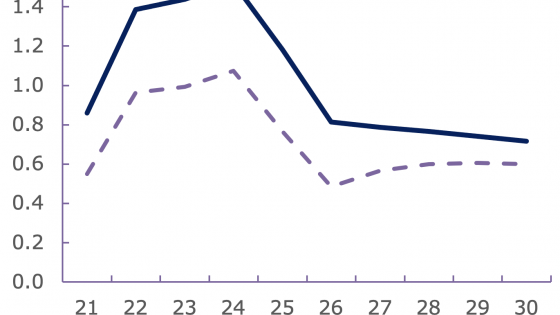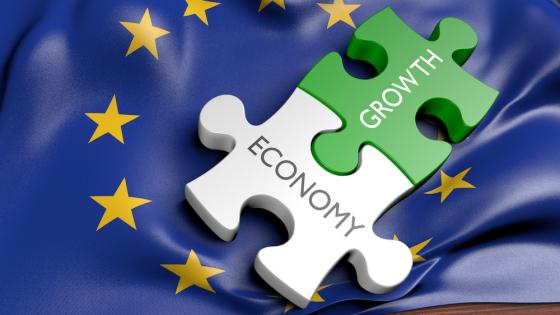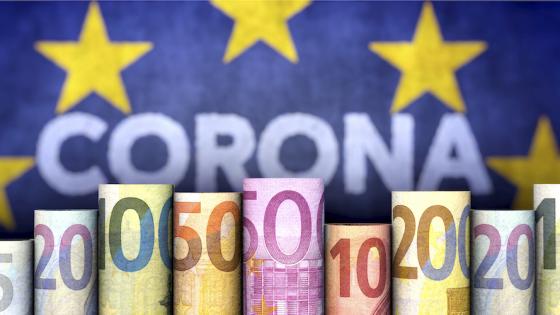The Next Generation EU (NGEU) funds1 – a package of programmes which, through a combination of grants and loans, intends to support the recovery from the COVID-19 pandemic and foster investments leading to a greener, digital economy – were launched on 21 July 2020 and since then have been at the centre of the policy debate. The largest instrument in the package, the Recovery and Resilience Facility (RRF), has been especially designed to facilitate the recovery by creating jobs and favouring the transition to sectors and activities with larger strategic potential. The expected fiscal expansion is huge. The total budget for 2021-2027 amounts to 13% and the RRF about 5.5% of EU gross national income (GNI). While expectations are optimistic, the large costs and the uncertain benefits of the proposed programmes, and the different nature of the current economic situation, call for caution and care in thinking about the economic consequences of the planned fiscal expansion.
Structural funds are not new tools; the EU has been distributing grants to European regions for over 30 years with the goal of supporting job creation, business competitiveness, economic growth, sustainable development, and to improve the quality of life. To reach these goals and to take into account the heterogeneous stages of development of different regions, a portion of the EU budget has been set aside for the so-called Cohesion policy. For example, for the 2014-2020 cycle, the Cohesion policy programme was endowed with over €355 billion, almost a third of the total. The European Structural and Investment funds, the main tools to achieve Cohesion policy goals, include four different programs: the European Regional Development Fund (ERDF), the Cohesion Fund (CF), the European Social Fund (ESF), and the European Agricultural Fund for Rural Development (EAFRD).2 The ERDF fund covers over 40% of the total budget, the EAFRD funds over 20%, and ESF and CF fund less than 20% each.
In a recent paper (Canova and Pappa 2021), we provide evidence on the regional dynamic macroeconomic effects of structural funds that the EU granted to member states over the last 30 years. We construct a novel database of regional funds, exploit the information contained in the main regional macroeconomic aggregates of 279 European NUTS2 units, and offer an historical perspective to evaluate the likelihood of the success of NGEU. To gather information about the likely consequences of the planned fiscal expansion, we focus on the production, employment, productivity, investment, and real wage effects of the grants provided by the ERDF (the aim of which is to foster investments in innovation and research, to favour the digital agenda, and to support small and medium-sized enterprises) and the ESF (the aim of which is to support investments in education and health, and to fight poverty).
Table 1 Average cumulative multipliers from ERDF and ESF structural funds
Note: Standard errors are in parenthesis
Source: Canova and Pappa (2021).
Table 1 reports the one-, two- and three-year cumulative average multipliers for the five regional macroeconomic variables, separately for ERDF and ESF grants. ERDF has a statistically significant and economically relevant average positive short-term impact on all regional macroeconomic variables, making it potentially useful for countercyclical purposes. These funds temporarily boost productivity and lead to an expansion of employment, compensation, investments, and production. Nevertheless, the positive impact dies out quickly and the gains dissipate almost entirely within three years. ESF has negative (although often insignificant) impact consequences, but it exercises positive average effects on all regional variables after 2–3 years, suggesting that it could be a good instrument to achieve medium-term transformation objectives. These funds temporarily affect labour markets, increasing compensation and decreasing hours worked. The increase in labour productivity they produce, induces positive and economically relevant medium run effects on investments, employment, and production.
As the standard errors reported in Table 1 indicate, there is considerable heterogeneity in regional outcomes. In our paper, we cluster estimates using several indicators and find that location, membership to the euro area, tenure in the EU, and national borders matter. For instance, in southern regions, ERDF has positive medium-term cumulative growth effects, while these effects are negative in northern regions; and ESF has larger and more significant medium-term repercussions. Similarly, for regions belonging to older EU member countries, ERDF produces less negative and ESF more positive medium-term growth effects. The level of development is also important. Figure 1 presents the profile of the average GVA multipliers, separately for ERDF and ESF, when per capita GDP is used to classify regions into quartiles.
Regions in the central portion of the income distribution benefit most from ERDF: their GVA cumulative multipliers are all positive in the medium term. Since the cumulative multipliers for these variables in regions belonging to the top quartile are negative, catch up around some common long-run value in response to ERDF shocks seems to take place. However, regions belonging to the first quartile feature positive GVA multipliers which turn negative at the three-year horizon. For ESF a similar outcome obtains. Thus, ERDF and ESF tends to twist the regional income distribution along the adjustment path, favouring regions in the central portion of the distribution and leave poor regions behind. Their asymmetric effects may thus lead to an increase in polarisation and regional inequality (see Canova 2004 for an earlier evaluation of income polarisation in the EU).
Figure 1 Cumulative multipliers for different income quartiles
Source: Canova and Pappa (2021)
To give a structural interpretation to the mechanism generated by the funds, we extend a standard workhorse New Keynesian model of a monetary union to allow for endogenous growth through two separate channels: R&D and human capital accumulation.3 ERDF innovations, which are modelled as federal R&D shocks, change the productivity of labour and the production possibility frontier. ESF innovations, which are modelled as shocks affecting the accumulation of human capital, alter instead the labour/leisure/schooling margins. The model can replicate several stylised facts present in the data and account for some of regional asymmetries EU regions display.
Federal R&D spending affects labour productivity and/or factor accumulation generating an externality on the aggregate level of these services. Hence, temporary R&D spending shocks produce persistent dynamics, even without agglomeration effects: they boost aggregate demand, because government absorption of goods and services increases; and they alter the aggregate supply, because factor productivity increases. The relative importance of these two effects determines the time profile of cumulative multipliers. Increases in federal human capital spending decrease employment and output and increase real wages on impact, as workers take advantage of the funds to change their time allocation and acquire better skills. Since human capital enhances effective labour productivity, investment demand increases and persistent second round effects on production and employment are produced.
Structural features and public administration characteristics may explain the observed asymmetries. For example, in the case of R&D spending, when the boost in labour productivity is temporary and reversed, multipliers may turn negative at longer horizons; a hump shaped cumulative multiplier profile can be generated when there are gestation lags; finally, an increasing profile of cumulative multipliers is obtained for low values of the externality of federal R&D spending in labour productivity. Thus, variations in the institutional features of countries are shown to be important determinants of the governance of Recovery and Resilience Programmes (see also Buti and Polli 2021).
One distinguished feature of the RRF is that it provides a combination of grants and loans in almost equal proportions. However, loans need to be repaid by individual countries and will enter the national stock of debt by 2023. We also study federal support coming in the form of grants and loans. Given what Italy and Greece have pledged to do, we assume that 50% of the federal support is in the form of loans and that distorting labour taxation is used to repay them. Figure 2 reports the profile of cumulative theoretical multipliers when only grants are used to finance government spending (continuous lines) and when grants and loans are used (dashed lines). The profile of the multipliers is always lower in the latter case because distortionary taxes have negative effects on the labour supply and capital accumulation. Thus, countries that only employ the grant portion of the RRF are in better position to recover, because multipliers are larger and government debt will not jeopardise the recovery at some future date.
Figure 2 Theoretical cumulative GVA multipliers for grants or grants and loans
Note: The figure compares cumulative multipliers for federal R&D spending shocks (left panel) and federal human capital spending shocks (right panel) when grants or loans and grants finance the spending.
Source: Canova and Pappa (2021)
To conclude, EU grants can have a useful role in counteracting the COVID-19 recession and in boosting job creation and investments that may lead to economic transformation. Thus, the creation of NGEU funds is a good idea and the choice of borrowing to finance them seems correct, because we are likely to produce gains that can sustain the cost of borrowing and avoid persistent accumulation of debt. However, because EU funds benefit some regions more than others, and the less fortunate turn out to be poorest, peripheral, and non-euro regions or recently added countries, the adjustment and transformation process will be unequal.
There are no obvious corrections that avoid increases in regional inequalities. However, there are examples of EU regions, which managed to escape the poverty trap and join the wealthy club. Studying in detail what has made a difference would be instructive to avoid repeating mistakes made in the past. In general, administrative and structural reforms, efficiency checks and, perhaps, generational changes may help to spread the gains more uniformly across EU regions (Leino-Sandberg and Vihriälä 2021 offer more suggestions along these lines).
References
Buti M and O Polli (2021), “Veto player theory and the governance of the Recovery and Resilience Facility,” VoxEU.org, 11 February.
Canova, F. & Pappa, E. (2021), “What are the likely macroeconomic effects of the EU Recovery plan?”, CEPR Working Paper, forthcoming.
Canova, F. (2004), “Testing for converge clubs in income per-capita: a predictive density approach,” International Economic Review 45: 49–77.
Leino-Sandberg, P. and V Vihriälä (2021), “The emerging fiscal union needs a solid foundation,” VoxEU.org, 31 May.
Géraldine M, P Pfeiffer, J Varga and J in 't Veld (2021) “A stylised quantitative assessment of Next Generation EU investment,” VoxEU.org, 4 August
Verwey, M, S Langedijk and R Kuenzel (2020), “Next Generation EU: A recovery plan for Europe”, VoxEU.org, 9 June.
Endnotes
1 Verwey et.al (2021) provide a brief overview of the economic rationale for collective action and an assessment of the expected impact of the recovery plan.
2 In the most recent budget cycle, the European Maritime and Fisheries Fund (EMFF) has been added.
3 To assess the macroeconomic impact of NGEU funds in a theoretical framework Géraldine et al. (2021) extend the QUEST model with a rich trade structure. Modeling NGEU investment as investment in infrastructure, they highlight its substantial growth effects.

